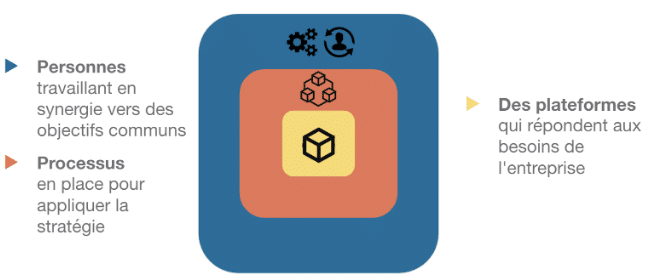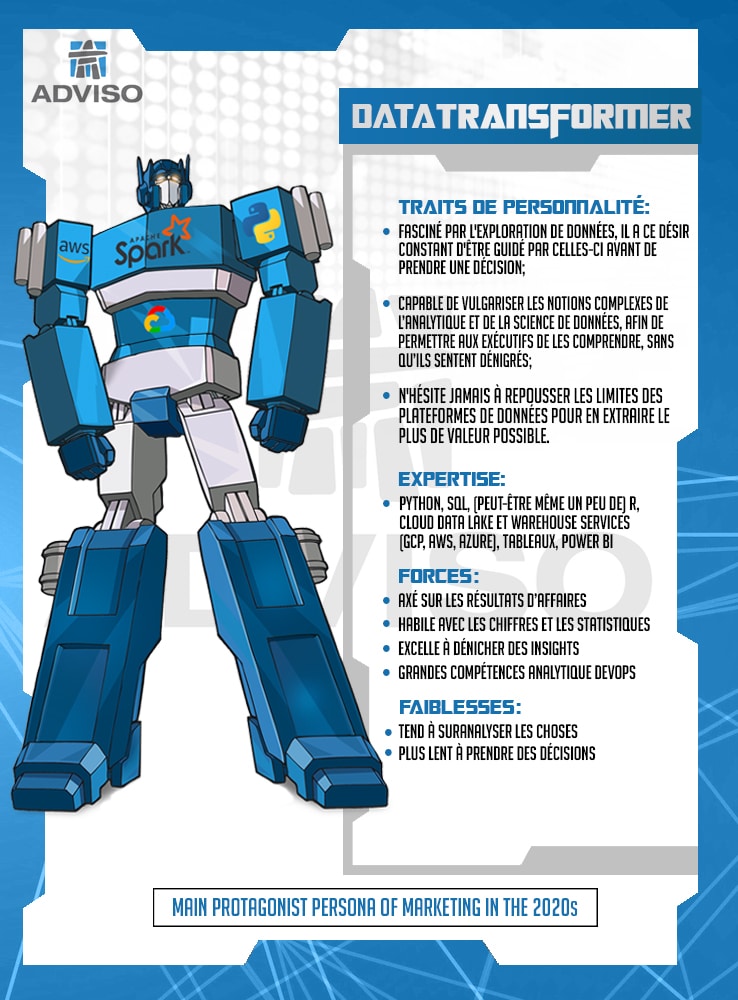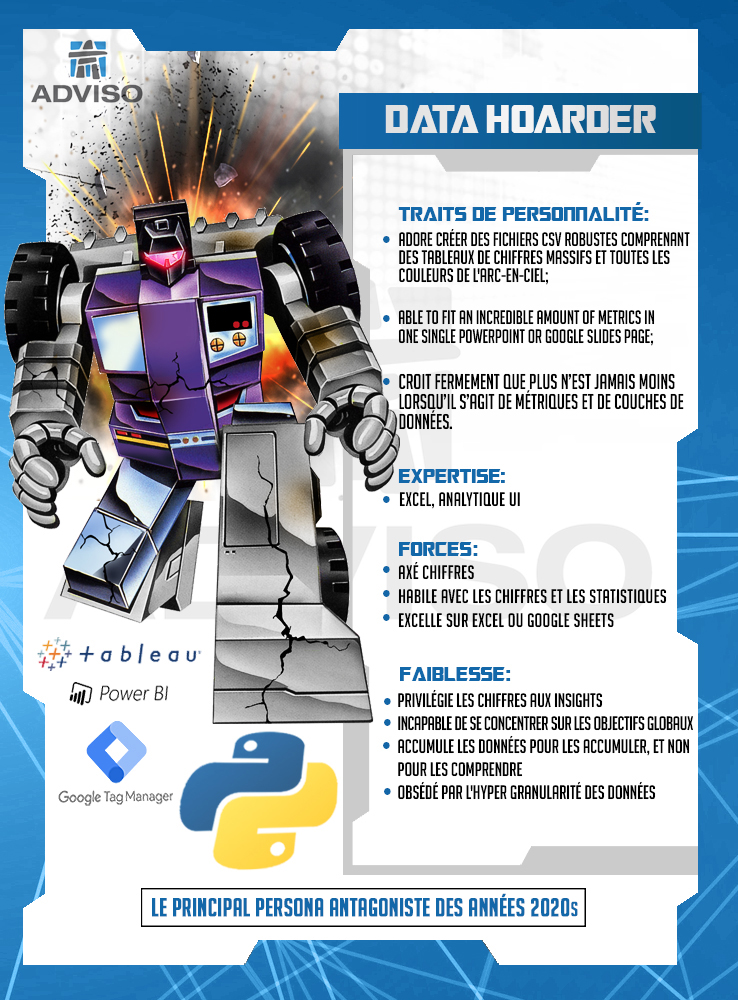Contributor
How many millions ($) is your marketing data worth?
Contributor
“Getting numbers is easy; getting numbers you can trust is hard! – Ronny Kohavi, Experimentation Manager at Bing
As a data scientist on my team said the other day, “Marketers need less technology and more data. At the same time, they need less data and more insights . This simple statement paints a good picture of what has happened in digital marketing in the past decade. Over the years, the focus has shifted from growing a larger technology stack to developing better data mining capabilities of the existing stack . Naturally, by focusing on data, we stay focused on insights , which brings real commercial value. But the real question behind this evolution is: how did marketing stacks get so messy?
THE RISE AND FALL OF THE PLATFORM HOARDERS
It all started in the early 2010s, when digital and analytics marketers — like me, let's face it — were on the cusp of what I would call the platform era . This was the great technological revolution in digital marketing. Google Analytics was coming of age, and Adobe Analytics (formerly Omniture) was the Ferrari of e-commerce data. CRM had a mystical and prestigious aura, and programmatic media buying, then known as “ yield management ,” was gaining popularity among more advanced marketers.
Then, in the mid-2010s, new generations of cloud marketing platforms were all the rage, i.e. DMPs, SSPs and DSPs, while data connection platforms like Domo and Datorama were on the rise. On the email marketing side, the trend was around marketing automation platforms such as Adobe, Salesforce, and HubSpot. The past decade has also spawned personalization platforms such as Sailthru, VWO, and Optimizely for A/B testing landing pages and personalizing website experiences. Essentially, marketers have been overwhelmed with platform options to choose from. This, in addition to the shortage of specialists capable of implementing and properly using these new tools.
This era gave rise to two important marketing personas who reigned supreme during the 2010s: The Platformer and its antagonist, the Platform Hoarder . To describe these two characters to you, we had fun illustrating them as robots inspired by the famous Transformers cartoon series and toy collection. On the back of each toy, you'll usually find a chart describing the robot's personality and main attributes. In order to capture the spirit of the Platformer and the Platform Hoarder , we designed two similar in appearance:


IS YOUR TECHNOLOGY STACK COMPLEX OR JUST…COMPLICATED?
Given the outlandish, almost magical promises made by this plethora of awesome platforms, marketing departments have sunk millions of dollars into a hodgepodge of tech tools. According to Toolbox , these departments have, on average, up to 16 MarTech platforms in their stack (and up to 20 on the B2B side). Moreover, since these tools often come with time-consuming and expensive IT implementations, it will often take years for many analytics and MarTech projects to yield any measurable business value. In some cases, it never happened . And that's when things got complicated.
One of the main reasons for the high failure rate of platforms is the obsession of marketing teams to collect and measure EVERYTHING. This obsession with hyper granularity often creates overly complicated (and not complex) data integrations and endless data inconsistency issues. Additionally, many of these integrations and metrics provide little business or marketing value. For example, you want to track a custom event ( custom event) on your website which only affects 5% of your traffic and 0.2% of your online income. If this job requires hundreds of hours to implement, is it really worth it? Now, keep in mind that hyper granularity isn't inherently bad, as long as the efforts produce commensurate business impact.
Now back to the notion of complexity. In the fields of physics and chaos theory, Dr. Karoline Weisner 's definition of a complex system is as follows:
“It boils down to a system that consists of many elements that interact in a disorderly way and from which we derive a robust order. There is nothing that centrally controls how things are supposed to behave. »
Further, complexity refers to advanced, consistent, modular, and emergent properties of a given system, while a complicated system refers to inherent complications that may or may not be consistent, advanced, or even useful. For example, the human body, as well as cars, have the property of being complex, advanced, coherent and therefore useful systems (in principle… 😏). On the other hand, poorly thought out business processes can become overly complicated for no reason, which is not complex, but quite complicated. Was this explanation simple enough for you (pun intended, hello!)?
Unfortunately, many analytics and ad/MarTech implementations give executives (who struggle to keep up with all the tech buzzwords and acronyms) the illusion of complexity. But in reality, they are very complicated because they were poorly designed. The IT and analytical marketing teams therefore end up focusing their energies on fixing bugs and on plumbing operations to the detriment of activities with higher added value (strategy, data mining and optimization).
THE NEED FOR DATA AND TECHNOLOGY ORCHESTRATION
More and more time and money is being spent on shiny new analytics and MarTech tools. Still, as they begin to age, they inevitably end up being stored in our collective tech stack dumps. What's more, the platforms that survive in different departments are usually managed in silos, without a common orchestration strategy or marketing plan. Managers of email platforms do not talk to managers of programmatic platforms, who do not talk to managers of website personalization platforms, who do not talk to managers of analytics platforms, except when there is a need for integration of new tagging . It's a disjointed mess!
The real key to achieving a complex, value-added technology stack is to develop a robust architecture and orchestration strategy to connect your platforms in a cohesive and modular way. This is kind of what we see emerging with microservices among application developers.
Looking back on the decade and era of the platform, all the broken promises and disappointments have created a wave of disillusionment among IT professionals and marketers. In fact, as far back as 2018, eMarketer reported that US advertisers were cutting programmatic platforms by 40%. According to Forrester , venture capital took notice of this trend, and investments in MarTech and AdTech reportedly fell 75% in 2019. This represents the slowest growth among the technology markets analyzed by the Forrester study. Incidentally, the announcement of a confirmed date for the third-party cookie apocalypse will make marketers even more hesitant to invest in other platform integrations in their stack , especially in advertising.
As an article by Alison Weissbrot in AdExchanger points out , even the much-talked-about Customer Data Platforms (CDPs), which are often seen as the logical successors to DMPs in a post- cookie apocalypse , are being adopted more cautiously and of mistrust. As Weissbrot points out :
“As marketers move away from DMPs, they take those learnings – and a heavy dose of skepticism – with them when testing new technologies. »
Now, this is not about pretending that platforms are bad or that they are not important in marketing. On the contrary, we have several case studies that prove that they are relevant. That said, the key thing to remember is that the accumulation of technologies, especially without a clear plan for People , Processes , Platforms (in that order), distracts marketing attention from what matters most, which is say a real strategy of analytics and activation.

MARKETING IN THE 2020S: THE AGE OF DATA TRANSFORMATION
Marketing managers, increasingly under pressure, are forced to justify their investments in analytics and MarTech platforms. So marketers are entering the 2020s with a new mission to extract data and business value from their existing technology stack before investing in new platforms. There will be no more open bar! The 2019 eMarketer Study of Marketing and Ad Tech Trends shows how businesses everywhere have made a shift to data, metrics and analytics over the past five years. Specifically, 67% of companies surveyed said their focus is shifting drastically towards data and analytics, and therefore less towards platforms per se.
This is the beginning of what I would call the era of data transformation in marketing. If data is the new oil, then refining it generates the fuel to propel your business further. And with all the existing data across your marketing department's 16-20 analytics and activation platforms, you should have enough data to analyze. Big data , or big data , to be more precise.
Most interesting in all of this is the unexplored potential of data unification between web analytics, marketing technology, and more traditional business intelligence systems. As more business intelligence experts realize the enormous potential of digital marketing data sources, from Google/Adobe Analytics to the esoteric programmatic tools used by marketers, finding ways to transform and normalize this data could reveal unexpected insights and business opportunities.
In the new decade, Data Transformers will begin to take center stage as the spotlight shifts away from Platformers . These will not disappear (with the exception of Platform Hoarders ), but they will evolve into new marketing roles as a conductor between the different platforms. Your Data Transformers will find themselves in newly created roles, such as Customer Data Managers, Data Strategists, or Analytics Translators. Behind these new roles we will find a support team doing all their magic in the background, ie data scientists, data engineers and analytics developers. That said, beware of the new main antagonist, the Data Hoarder !
Again, in order to capture the spirit and attributes of the Data Transformer and Data Hoarder , who will no doubt become the main characters of the 2020s in marketing, we have created the two profiles below:


While the activation side (such as the management of marketing campaigns in the platforms) will remain with the digital marketers, the raw data from the analytics and MarTech platforms will be routed as raw material by the data engineers to the cloud -based Big Data platforms. such as Google Cloud, Amazon and Azure. They will then be processed by artificial intelligence algorithms and visualized in dashboards for analysis, decision-making and ultimately sales and marketing activation.
In many companies, this is already underway and efforts are being made to realize this vision. That said, if your company isn't there, here's why you need to get started… right away!
UNEXPLORED MARKETING DATA COULD COST YOU MILLIONS
As my colleague Moulaye Traore points out in his brilliant article on augmented analytics , there is a real, concrete and measurable return on investment in finding business insights . If, on average, one insight from data can lead to a performance gain of $25,000, optimizing that average to $50,000 means you're doubling your marketing performance. The main challenge of optimizing the production of insights is the proper exploration of the data. The more time an organization can spend exploring new data patterns, the more opportunities it can uncover.
When working with only one or two data sources, this process can be optimized quite easily. But in the context of exploring data from a wide range of analytical and MarTech platforms, the exercise can be more difficult. On the other hand, you also have the opportunity to discover several performance blindspots in your marketing activities across channels. Eventually, you also have the opportunity to identify significant inefficiencies in this large cross-platform data stack .
In fact, unexplored marketing data across your many platforms could be hiding millions of dollars, both in efficiencies and performance opportunities. But until you are organized in an analytical framework to mine and explore this wealth of data, you will never know.
My advice for your career is this: don't wait for your company's next rockstar , who is likely to be a data processor, to do it for you. Become that rockstar! Take the leap into this new era of marketing and be proactive in leveraging your analytics and MarTech data. Before jumping into any new technology, maximize the potential of the platforms you already have. By taking a closer look at the data from your existing platforms, such as Google/Adobe Analytics, Facebook/Google Ads, HubSpot, your ad server, Marketo, Salesforce DMP, Segment CDP, Adobe Target,Optimize and probably so many more buried in your stack, you might find that they contain more than your eyes can see. So, in the famous words of Optimus Prime, time to ROLL OUT [the data]!!
PS. Only Transformers fans will recognize the reference above 😎
If you need support building a marketing data mining roadmap, our analytics and data science team is here to help. In the meantime, for some tips on how to avoid bad data hoarding practices, please download our guide, 7 Principles of Data Marketing Inspired by Konmari .




